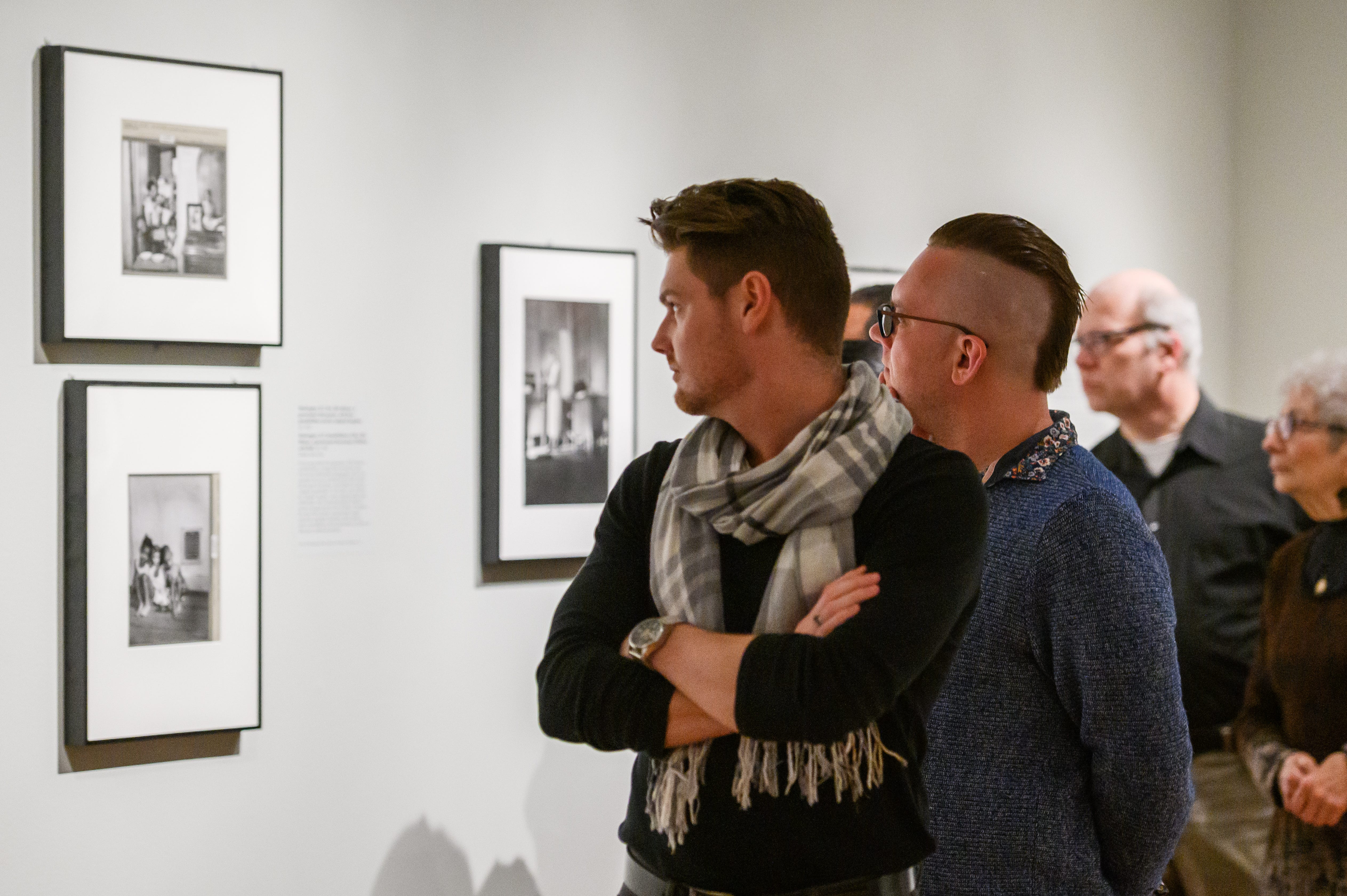On Assignment: Photographer Gordon Parks and Mass Media
Tags for: On Assignment: Photographer Gordon Parks and Mass Media
- Blog Post
- Education
- Exhibitions
Stephanie Foster, Interpretive Planner
April 26, 2019

Image courtesy the Cleveland Museum of Art
The free exhibition Gordon Parks: The New Tide, Early Work 1940–1950, on view through June 9, explores the impact and importance of the 1940s on Gordon Parks’s 60-year career. In the essay below, the CMA’s interpretive planner, Stephanie Foster, discusses mass media in relation to Parks’s career and explores a key interpretation initiative related to the exhibition.
Many of us use our phones or tablets to explore what’s going on in the news or in popular culture, but in the 1940s millions of Americans read the news, saw the latest fashions, and discovered new recipes in the pages of magazines like Life and Ebony. During the 1940s, Gordon Parks grew from a self-taught photographer and photojournalist to an expressive professional photographer working for the nation’s most popular publications. At the end of that decade, Parks became the first African American photographer on staff at Life, which was known for the high quality of its photography.

As visitors make their way through the exhibition, Parks’s evolution as a photographer becomes clear. By the early to mid-1940s Parks had developed a journalistic style, aiming to tell stories with his photographs. In 1942 Parks began chronicling social conditions in Washington, D.C., for the Historical Section of the Farm Security Administration. When that department was moved to the Office of War Information, he began to photograph on assignment in New York, New England, and Michigan. By the late 1940s Parks had contributed to periodicals including Ebony, Circuit’s Smart Woman, and Glamour.

Because Parks’s work in mass print media was a significant part of his career, we felt that the ability to flip through the magazines featuring his work would be an important part of experiencing the exhibition. Old issues of Life magazine are available — you may have some in your attic or basement — but they’re also very fragile. To allow tens of thousands of visitors to flip through magazines without worrying about damaging them, we collaborated with our CMA colleagues in the Digital Innovation and Technology Services department to create a digital experience. Five kiosks in the exhibition contain Microsoft Surface tablets that mimic the experience of flipping through magazine articles — advertisements and all.

My favorite magazine kiosk in the exhibition features the November 1, 1948, issue of Life that includes the picture story “Harlem Gang Leader,” about 17-year-old Leonard “Red” Jackson, the leader of the Midtowners gang. This article grew out of a project about poverty and mental health that Parks had been developing with writer Ralph Ellison. Parks spent about a month documenting Red’s life, making more than 100 photographs that told a nuanced story intended to expand public perceptions of Harlem youth.

Life ultimately chose to publish only 21 images, which told a bleak story of hopelessness and violence. Six of Parks’s photographs from this series are in the exhibition — of those, two do not appear in the final Life spread. We felt it was important for visitors to be able to explore the entire magazine story alongside the prints to more fully understand how an artistic vision can change through editing, cropping, and captioning.


We hope that these digitized magazines provide visitors with an additional entry point into Parks’s work. When you tour the free exhibition this spring, look closely at the photographs on the wall but also make sure to flip through the digitized magazines to experience the photographs in a completely different format — one that may complicate or even change the narrative.